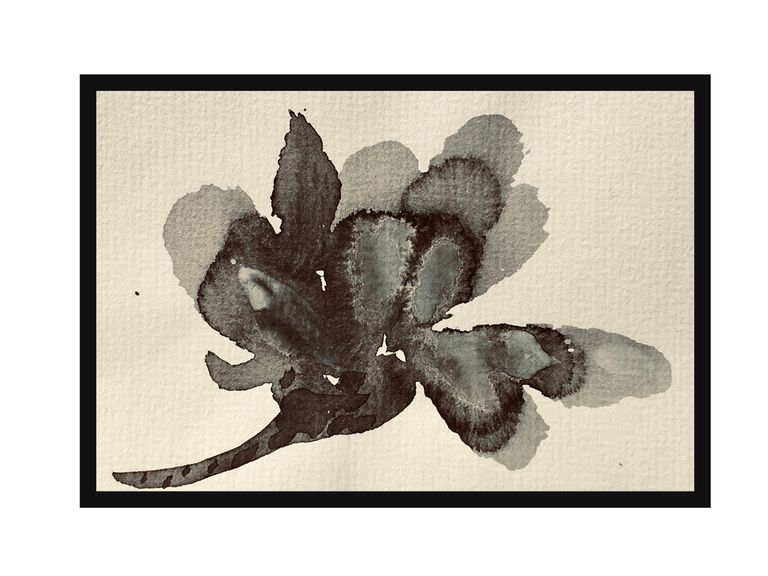
And twinkle on the milky way,
They stretched in never-ending line
Along the margin of a bay:
Ten thousand saw I at a glance,
Tossing their heads in sprightly dance.
To-morrow dies;
All that we wish to stay
Tempts and then flies.
What is this world’s delight?
Lightning that mocks the night,
Brief even as bright.
MAGNOLIA
To get practice in watercolor painting, i.e. to make brush-stroke miles, I used small-format watercolour papers as a medium. So, since I was only playing, but not seriously intending to produce finished artworks yet, all the paintings shown here can be considered as practice results. The more you do such exercises lightly, the better you will succeed in confident brush strokes on a work of art that you want to hang on the wall, give away or sell, for example.
As you can see, I first started with a light grey and then moved on to the next layers of colours, painted wet on wet and wet on dry.
I admire the beauty of their flowers in spring when they sprout quite early and the bushes are full of these filigree white or pink blossoms.
My mother once kept a magnolia bush in her front garden and I have inherited her love of flowers. They don't last very long and are an example of how quick some flowers lives fade away.
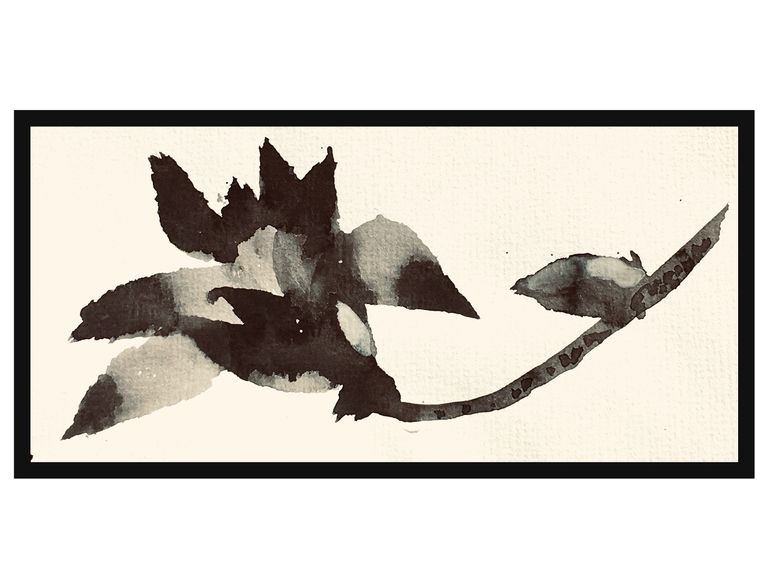
In the piece right above you see a bit more contrast than in the first blossom. Here I also painted the typical stem with a fresh, not yet opened bud of the Magnolia.
The point of the exercise for me was to paint different stages of flowering/ withering. The different perspectives from which magnolias can be painted are also a rewarding sight for an artist. Sometimes it is not so important to draw a magnolia precisely, certain character contours are enough.
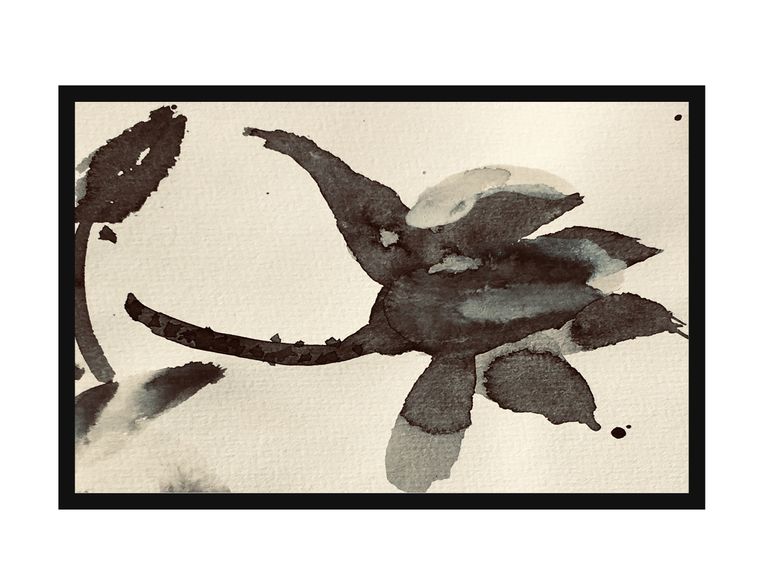
... Indeed, when I think about it, I see in the suggestion, in the few brushstrokes, the higher artistic challenge, because it is not meant to be photo-real, but to use only as much as necessary and as little as possible of colour and form to complete or create the image in the eye of the beholder.
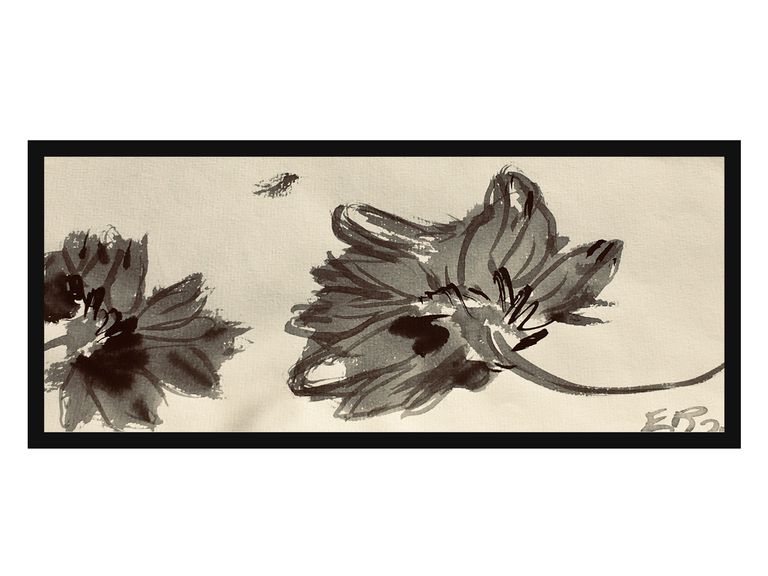
In this upper exercise I did not use a wet on wet technique, but a mainly dry on dry. It looks completely different.

BAMBOO
I don't know how many bamboo leaves and logs I practised, but there were many. I was very annoyed because I couldn't get the very certain brushstroke, even though the shades of light to rich colour were fun. Still, the bamboo leaf is not my painting friend, I can't get the necessary twist when applying the brush.
I had much more fun with the bamboo stems. One of the exercises resulted in having a neat row of stems:
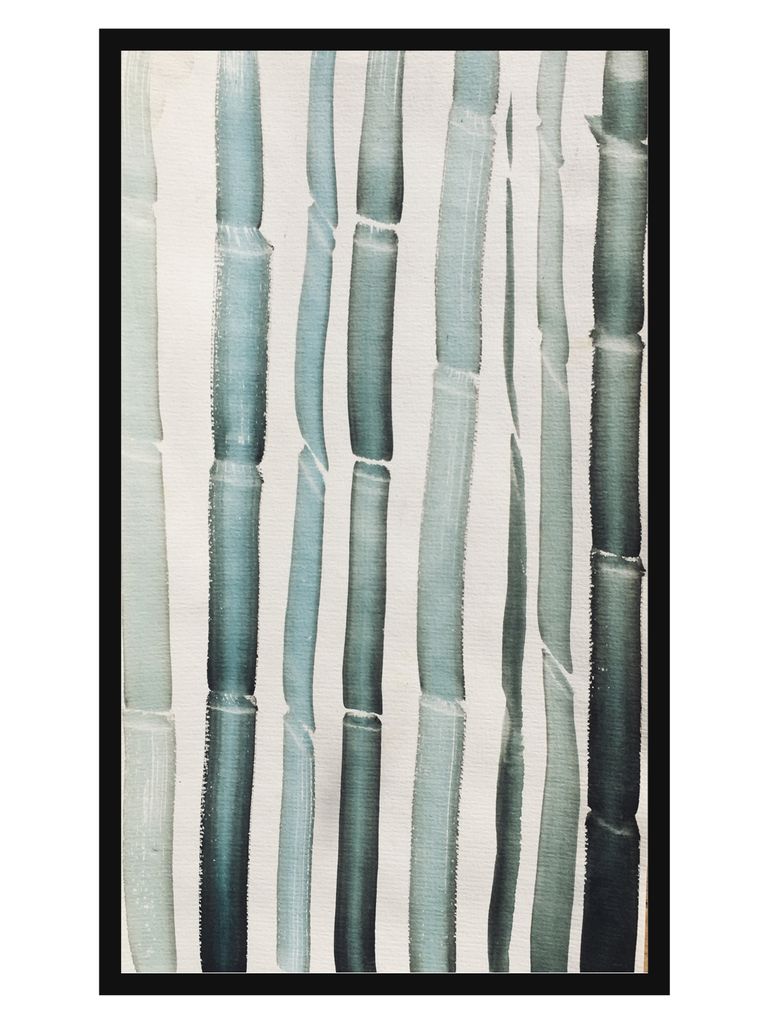
When I paint, I often feel that I must neither be too determined nor too lax. It's like associative or free writing (authors know this), you just write away without thinking about what it should become and yet there is an intention and an inner idea. In the exercise with the blossoms, of course, it was different, I knew it would be magnolia blossoms, but that was all and how the individual ones came out was rather unplanned.
I even think I had a template, but I didn't follow it very strictly, just a cat's eye, the soporific kind, if you know what I mean.
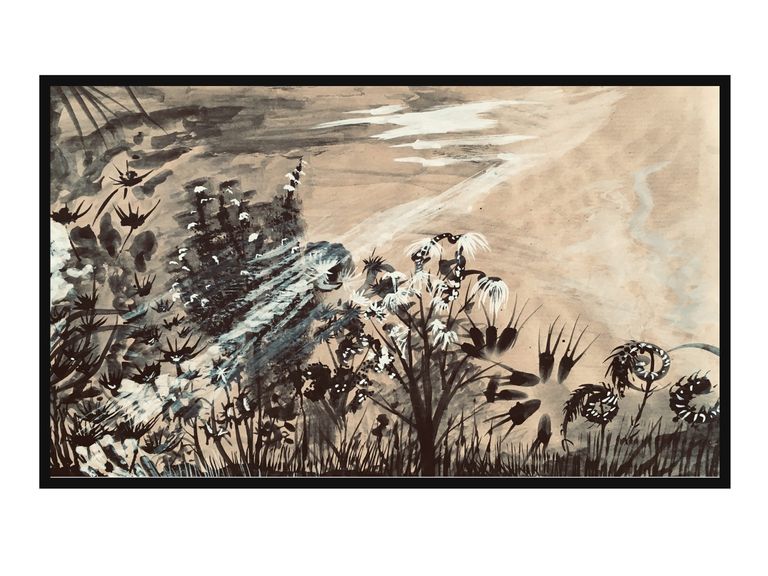
The last painting from right above was neither an exercise nor a planned work.
I had some brown wrapping paper lying around and a surplus of white and black paint left (I think), not quite sure anymore, and just made a black and white landscape without much thought as to what would come out of it. The plants and flowers are purely imaginary, not imitations of real flowers or plants.
Plants are grateful motifs, you don't need to orientate yourself on reality, there will be something similar that your memory will match and find it to be real.
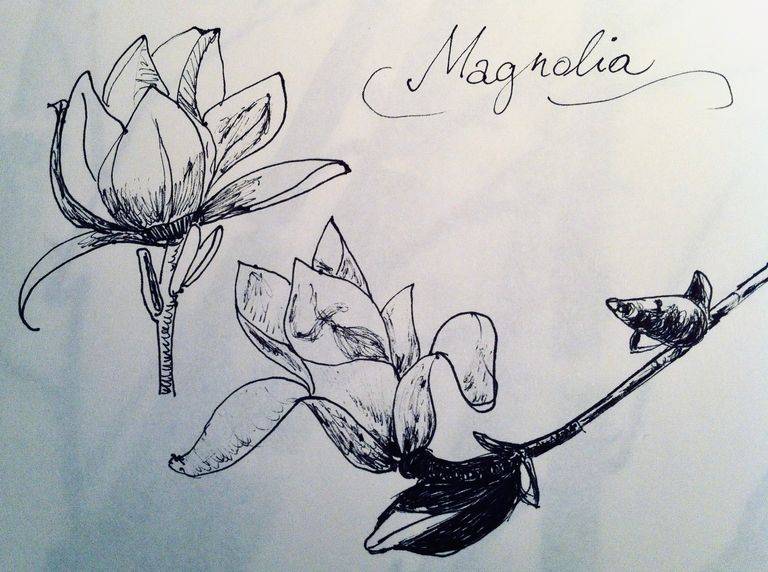
Here you see the biros drawings from a time before the exercises with watercolours. I found them again in my sketchbook, even with my blog user name. I wouldn't go so far as to say they were plant studies, I actually made too few of them for that.
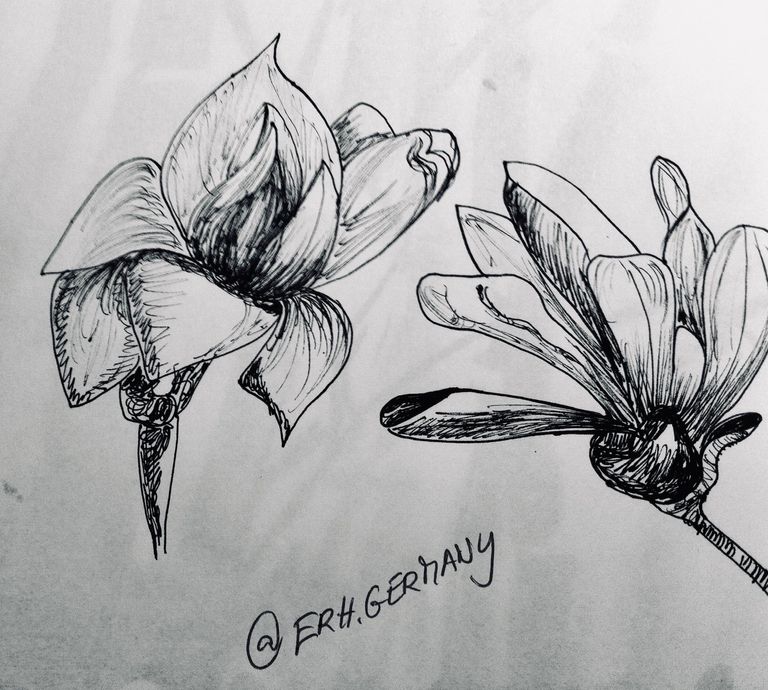
However, frequent visits to botanical gardens, or gardens in general, is a learning field for the eye, because it remembers certain shapes through the habit of looking at them.
For the last two years we maintained the front garden on my brother's property and there grew a variety of plants with a wide range of flowers. I think flowers are such a lavish splendour and sometimes you wonder if it's not because nature enjoys beauty ;)
Materials used:
Watercolours
Japanese brushes in different strengths
Watercolour sheets of paper
Brown wrapping paper
Digital procedure:
Since the flower motifs are very small black and white sketches, I photographed them individually, cut them out digitally and edited them so that you can see them up close. I also made some changes in contrast and minor colour adjustments due to the digital use.
How I proceeded: photographed with my mobile phone, transferred the data to my laptop, edited the images, copied the Jpgs into a PowerPoint presentation template, added black framing there, exported these images again as JPG and finally integrated them into the posting template.
The bamboo stems were created on a DINA4 watercolour paper, here the original colours are in the green tones shown. The original landscape picture on the wrapping paper is about DINA3 in size.
I've just upvoted @erh.germany's content.